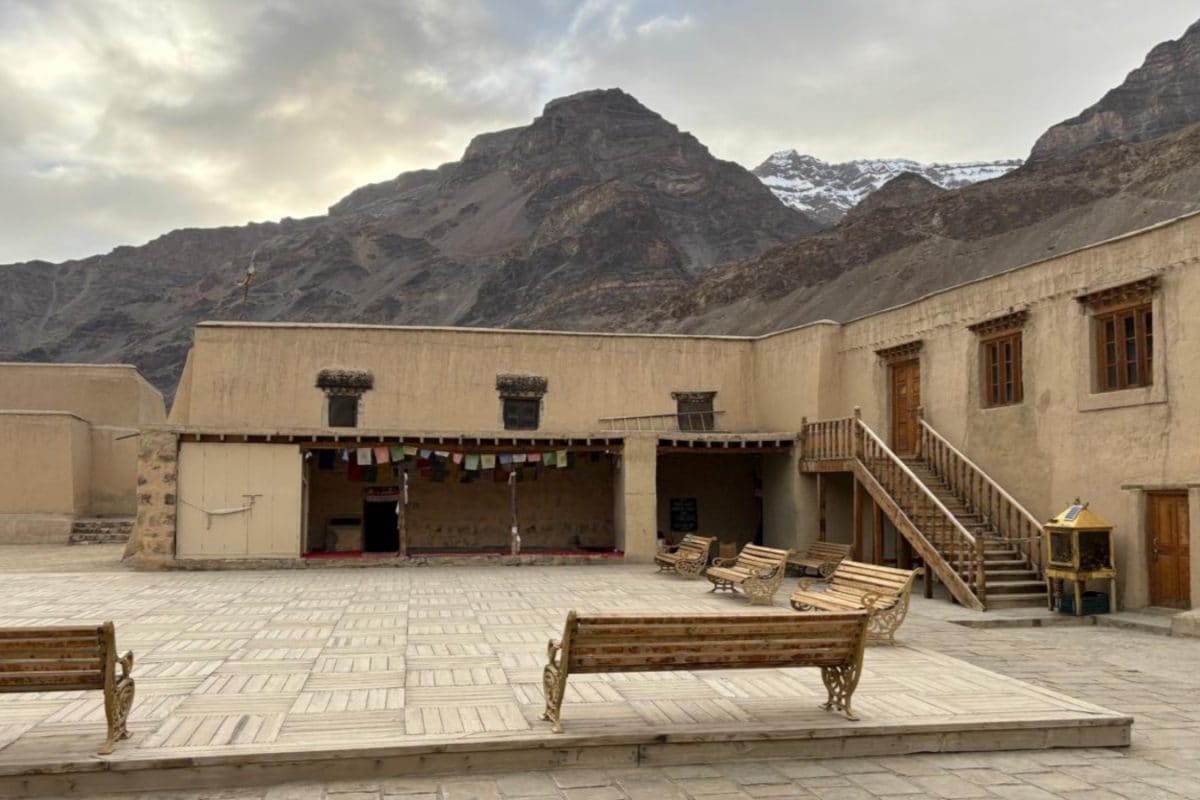

The ancient Tabo Monastery in Spiti Valley, a treasure of Buddhist art and Himalayan heritage, is facing an escalating threat from climate change. Lamas are urgently seeking intervention from the Archaeological Survey of India (ASI) to protect the monastery from the increasing frequency of extreme weather events.
The Tabo Monastery, founded in 996 AD, is over 1,000 years old and stands as a "cornerstone of Buddhist spirituality". However, it is now at risk due to climate change. The monastery has sent an urgent request to the ASI for preventive measures against damage from extreme weather events like cloudbursts and flash floods, which have become common in recent years. The monastery has requested a retractable roof over the structures and an improved drainage system to prevent waterlogging. A priest from the monastery stated that if the structures cannot be saved, conserving the interior monuments would be pointless.
Spiti Valley, a cold desert in the Himalayas, is experiencing a silent emergency due to the rapidly changing climate. The region is witnessing accelerated glacier melting and erratic monsoon patterns, leading to frequent cloudbursts and flash floods. These events pose a significant threat to the mud-based structures and mural-rich interiors of the Tabo Monastery. The increasing instances of cloudbursts and flash floods in the region have prompted the monastery to seek immediate action from the ASI.
Lama Sonam Kunga, a priest at the monastery, emphasized the need for temporary protective roofing across the structures and an improved drainage system. He noted that extreme weather events have increased significantly in the past few years, posing a threat to the monastery's vulnerable structures and interiors. The structures and mural-rich interiors have already sustained some damage, with water seeping into the walls during heavy rain, causing cracks in wooden pillars and swelling of walls in temples. Waterlogging around the monuments is another problem, which could be mitigated with a retractable roofing system and improved drainage to divert rainwater.
The ASI has responded to the monastery's plea and will soon begin urgent repairs to address structural damage and protect the ancient wall paintings. An ASI official stated that they would make an estimate and float a tender for the conservation work. The immediate intervention will focus on structural problems like cracks in walls, tilting pillars, and waterproofing the roof. In the second phase, the ASI's science branch will conserve the paintings in the monument, following their conservation policy. The ASI will make an immediate intervention to address the structural wear and tear and damage to paintings at the ancient Tabo Monastery in the Spiti valley.
The ASI is also considering the monastery's request for a temporary retractable roof over the structures. The official said that it was a significant project and the proposal would be sent to headquarters. While such interventions are rare, higher-ups will make a decision.
Spiti's climate is changing, with shifts in weather conditions resulting in less snowfall, impacting water availability. Most villages in Spiti rely on glaciers and springs for fresh water, but these sources are diminishing due to climate change. The Spiti River basin is susceptible to climate change, with a higher rise in temperature than other parts of Himachal Pradesh. A study projects a 4.1°C rise in temperature and a 3.4% increase in winter precipitation by 2070, leading to an 84.8% loss in glacier-stored water and a 71.8% reduction in glaciated area.
Farmers in Spiti are also facing the effects of climate change, with melting glaciers and water shortages forcing many to abandon agriculture. Traditional water resources are drying up, leading to decreased agricultural output. The region receives little rain, and the melting of glacial snows earlier in the year deprives farmers of water during the crop-growing season.
The Tabo Monastery, a monument of national importance since 1972, has begun to show signs of wear due to excessive seepage from heavy rain, triggered by climate change. Studies indicate that increasing wet conditions pose a threat to the monument.